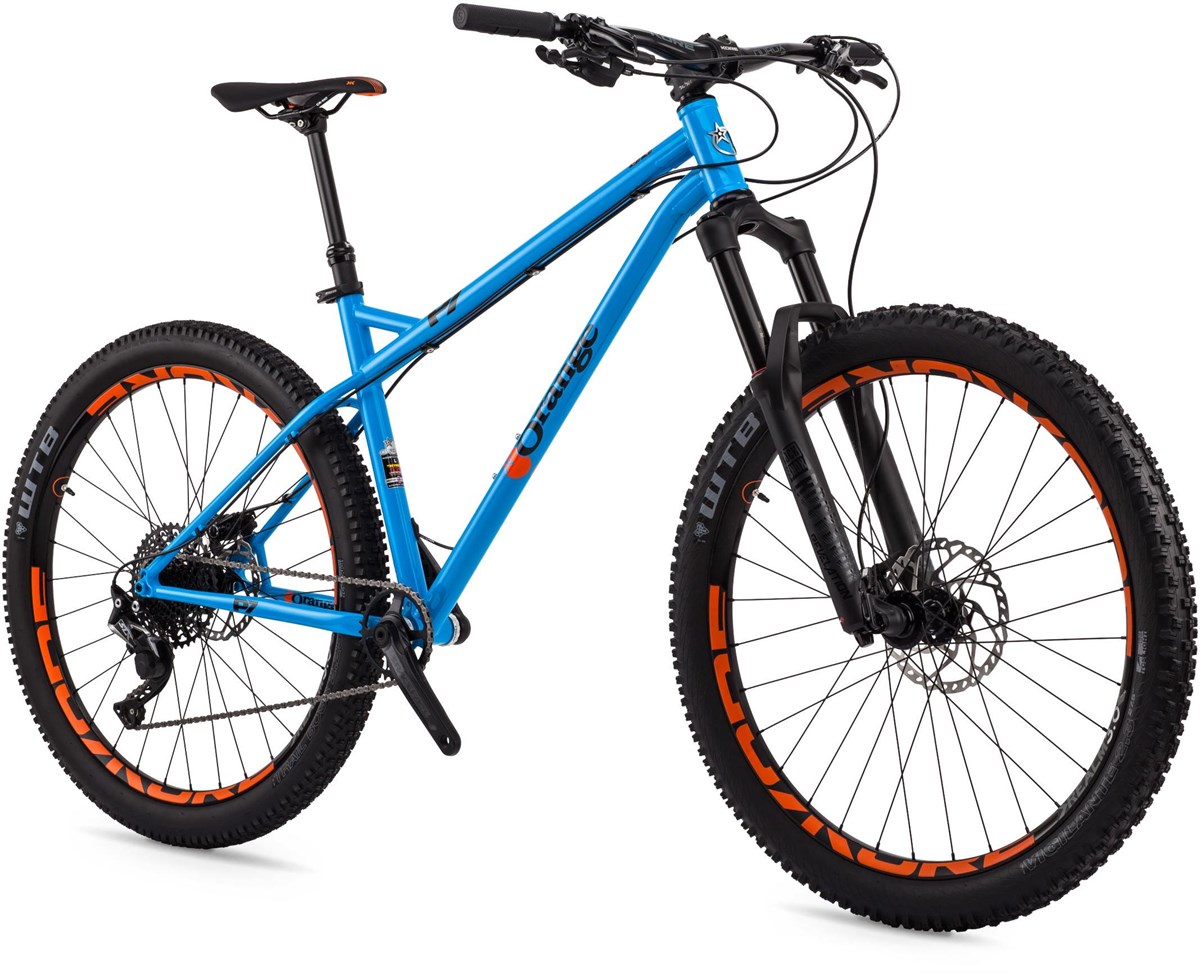Orange P7 S 27.5" Mountain Bike 2018 - Hardtail MTB

A classic reborn. The Orange P7 S 27.5” features a springy Reynolds 525 CroMo frame, perfect for British trails in the winter. A capable RockShox Revelation fork boasts 150mm travel to take on rough mountain tracks, while the WTB tyres keep traction in the toughest conditions. The 27.5” wheels are quick to get up to speed and offer nimble handling.
Contact us about customisation options for your Orange bike!
Key Features:
- Reynolds 525 CroMo frame is strong and handles beautifully
- RockShox Revelation RC fork has 150mm travel for trail control
- Shimano SLX 1x11 speed drivetrain shifts precisely with a wide range
- Shimano MT500 disc brakes are powerful and consistent
- Kore/Joystick wheels keep you rolling through challenging terrain
- WTB Vigilante and Trail Boss balance grip and fast rolling
- Sizes: Small, Medium, Large, X Large
- Colours: Cyan Blue
- The Orange P7 S 27.5” is available with 0% APR finance
The legendary Orange hardcore steel hardtail has gone through a few changes over the years and after a brief hiatus it's back with new geometry, a new Reynolds 525 tubeset and a new wheel size, but with the same attitude that'll see it stood outside the headmaster's office on the first day of trail school.
This new P7 has rebel written all over it; long top tube geometry, a slacker head-angle even that the rowdy Crush, this bike means business. The whip and the spring of the CroMo chassis cannot be replicated, and once you 'get' steel, it's hard to go back to a frame with a less spirited ride. The P7 urges you to go faster, pedal harder and fly higher.
With frame features like the bolt through rear axle for rigidity, optional hose and cable bosses where you want then, chunky tyre clearances, and internal dropper seatpost routing the P7 is ready to rock - Steel Yourself.
All Tredz bikes are:
- Fully built & ready to ride
- Fully checked & tested by Cytech qualified mechanics
- Available with 0% APR finance on baskets over £99
- 365 day no hassle returns
- Free delivery in the UK Mainland on a date that suits you
In the box with every Tredz bike is:
- Free Tredz 9 key trail tool
- Free Tredz pedal spanner
- Free basic pedals
- Tredz drawstring kit bag
- 16 point quality control check sheet
- Basic bike setup instructions
- Free Cycle Plan insurance voucher (8 weeks)
Occasionally, without notice, manufacturers change product design and/or specifications.
Customer reviews and Q&A's are disabled because you declined functional cookies.
To enable reviews and Q&A's click the 'Cookie Settings' button below and enable functional cookies.
No longer available
Sorry you missed the Orange P7 S 27.5" Mountain Bike 2018 - Hardtail MTB.
This product is no longer available.